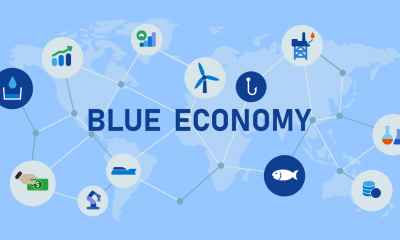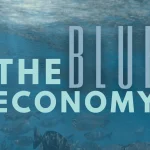By Hon. Prof. Kariuki Muigua, OGW, PhD, C.Arb, FCIArb is a Professor of Environmental Law and Dispute Resolution at the University of Nairobi, Member of Permanent Court of Arbitration, Leading Environmental Law Scholar, Respected Sustainable Development Policy Advisor, Top Natural Resources Lawyer, Highly-Regarded Dispute Resolution Expert and Awardee of the Order of Grand Warrior (OGW) of Kenya by H.E. the President of Republic of Kenya. He is the Academic Champion of ADR 2024, the African ADR Practitioner of the Year 2022, the African Arbitrator of the Year 2022, ADR Practitioner of the Year in Kenya 2021, CIArb (Kenya) Lifetime Achievement Award 2021 and ADR Publisher of the Year 2021 and Author of the Kenya’s First ESG Book: Embracing Environmental Social and Governance (ESG) tenets for Sustainable Development” (Glenwood, Nairobi, July 2023) and Kenya’s First Two Climate Change Law Book: Combating Climate Change for Sustainability (Glenwood, Nairobi, October 2023), Achieving Climate Justice for Development (Glenwood, Nairobi, October 2023) and Promoting Rule of Law for Sustainable Development (Glenwood, Nairobi, January 2024)*
In 2015, the member states of the United Nations unanimously agreed to adopt the 2030 Agenda for Sustainable Development. This agenda includes 169 objectives and 17 goals related to sustainable development. The United Nations General Assembly announced in resolution 70/1 that the Sustainable Development Goals and Targets would be monitored and evaluated using a set of global indicators that would concentrate on quantifiable results. Therefore, the reporting done by companies is a significant data source for the framework used to track progress towards the Sustainable Development Goals. Reporting, which serves as a primary source of information on company performance, has the potential to enrich and enhance the monitoring mechanisms for the Sustainable Development Goals. It does this by providing stakeholders, such as governments and providers of capital, with the means to evaluate the economic, environmental, and social impact that companies have on sustainable development.
Risk assessment based on sustainability from the perspectives of all stakeholders, including financial, social, environmental, and technical ones, and risk management are the main areas of attention for sustainability accounting and auditing. The technocratic paradigm, which places an emphasis on hard data and its potential to give comprehensive control over persons, institutions, and systems, predominates in contemporary sustainability auditing. The use of indicators may enhance the quality of decisions and trigger more effective actions by simplifying, clarifying, and making aggregate information more available to decision-makers. This can lead to improvements in both choice quality and action effectiveness. In this particular setting, the SI have been used as instruments with the purpose of assisting in gaining an understanding of the idea of sustainability. This awareness has been achieved via the utilisation of a methodological approach that is tied to the new paradigms of Sustainable Development.
Indicators of Sustainability (SI) are metrics that aim to quantify the degree of sustainability and gather information for improved decision-making about policies, programmes, initiatives, and activities linked to sustainability. The SI looks to be a vital instrument for assessing development objectives as a sustainable proposition now that its significance has been shown with regard to public policy. Indicators of sustainability are an important tool for businesses to have. Concerns over the environment have been more prevalent throughout the years. These companies have a lot to offer, particularly in the area of minimising the negative externalities they cause. This must be accomplished via their plans and tactics, but it is very necessary that there be a technique that is adequate for judging how effective these measures have been. These are the techniques that may be used to evaluate how well a company’s strategy has been implemented. These actions are tied to certain goals and are outlined in a strategy for the corporate sustainability of the organisation. For instance, cutting down on waste or one’s carbon impact throughout the manufacturing process. Implementation of these standards is used to determine whether or not progress is being achieved in the desired direction.
The use of these indicators is done mostly for the purpose of determining whether or not the organisation is successful in achieving its goals. In the event that there is a deviation, appropriate remedial actions may be taken. Therefore, sustainability indicators are used to assess not only the profitability of the organisation but also how well it carries out its aims. The process of developing indicators is always a two-way affair. Indicators are not only sought by policy goals, but they also serve to concretize and shape those goals in many ways. As a result, the process of producing indicators cannot be limited to a strictly technical or scientific scope; rather, it need to be characterized by open communication and a focus on policy.
Indicators that are acceptable for this function need to be straightforward and unambiguous about their purpose: a) the number of indicators should be kept to a minimum, and the process of calculating them should be made public; b) the indicators should be directionally clear, which means that they should point out items and trends that are obviously relevant in terms of their importance for sustainability, and they should be sensitive, which means that they should be able to signal either progress or the absence of progress. While there may be challenges in development of these indicators, stakeholders from different sectors can work together to develop a set of indicators that are both relevant to the country and easy to follow up on. Thus, such challenges should not be used as a hindrance to not promoting development of the SI for promoting sustainability audit in the country.
It has been pointed out, and properly so, that sustainability consists of environmental, economic, and social aspects (occasionally institutions are mentioned as the fourth dimension), each of which contains a lot of components that make it up. Therefore, indications of sustainability may be as varied as the components of the system, and they can also differ with respect to worldviews, objectives, and scales of time and space. There are a lot of indicators, but most of them only reflect some elements of human–environmental systems. Some of them are more integrative than others, but none of them are sufficient to measure all of the characteristics of sustainability by itself. In addition, It is becoming more widely acknowledged that the most significant value of the terms “sustainability” and “sustainable development” rests in their focus on uniting the various aspects, the most prevalent classifications of which are environmental, economic, and social. In light of this, efforts to promote sustainability need to centre on the holistic, integrated totality of human and environmental systems.
Sustainability indicators must be more than environmental indicators; they must be about time and/or thresholds. Development indicators should be more than growth indicators; they should be about efficiency, sufficiency, equity, and quality of life. Development indicators should be more than growth indicators; they should be about efficiency, sufficiency, equity, and quality of life. When it comes to our attempts to make sustainable development a reality, indicators and indices are very necessary for developing a scientific knowledge and formulating effective policies. These measurements will need to continue to increase in complexity and sophistication as time goes on in order for them to keep up with the demands placed on them by the ever-worsening state of environmental and socioeconomic issues. The process of discovering suitable and efficient indicators of sustainability is one that involves evolution as well as learning new things.
This is an extract from Kenya’s First ESG Law Book: Embracing Environmental Social and Governance (ESG) tenets for Sustainable Development” (Glenwood, Nairobi, July 2023) by Hon. Prof. Kariuki Muigua, OGW, PhD, Professor of Environmental Law and Dispute Resolution, Senior Advocate of Kenya, Chartered Arbitrator, Kenya’s ADR Practitioner of the Year 2021 (Nairobi Legal Awards), ADR Lifetime Achievement Award 2021 (CIArb Kenya), African Arbitrator of the Year 2022, Africa ADR Practitioner of the Year 2022, Member of National Environment Tribunal (NET) Emeritus (2017 to 2023) and Member of Permanent Court of Arbitration nominated by Republic of Kenya and Academic Champion of ADR 2024. Prof. Kariuki Muigua is a foremost Environmental Law and Natural Resources Lawyer and Scholar, Sustainable Development Advocate and Conflict Management Expert in Kenya. Prof. Kariuki Muigua teaches Environmental Law and Dispute resolution at the University of Nairobi School of Law, The Center for Advanced Studies in Environmental Law and Policy (CASELAP) and Wangari Maathai Institute for Peace and Environmental Studies. He has published numerous books and articles on Environmental Law, Environmental Justice Conflict Management, Alternative Dispute Resolution and Sustainable Development. Prof. Muigua is also a Chartered Arbitrator, an Accredited Mediator, the Managing Partner of Kariuki Muigua & Co. Advocates and Africa Trustee Emeritus of the Chartered Institute of Arbitrators 2019-2022. Prof. Muigua is a 2023 recipient of President of the Republic of Kenya Order of Grand Warrior (OGW) Award for his service to the Nation as a Distinguished Expert, Academic and Scholar in Dispute Resolution and recognized among the top 5 leading lawyers and dispute resolution experts in Band 1 in Kenya by the Chambers Global Guide 2024 and was listed in the Inaugural THE LAWYER AFRICA Litigation Hall of Fame 2023 as one of the Top 50 Most Distinguished Litigation Lawyers in Kenya and the Top Arbitrator in Kenya in 2023.
References
Andresen, S.; Boasson, E. L.; Hønneland, G. International Environmental Agreements: An Introduction; Routledge, 2012.
APLANET. Sustainability indicators: definition, types of KPIs and their use in the sustainability plan. APLANET. https://aplanet.org/resources/sustainability-indicators/ (accessed 2023-06-28).
Batalhao, A., de Fatima Martins, M., van Bellen, H.M., Ferreira Caldana, A.C. and Teixeira, D., ‘Sustainability Indicators: Relevance, Public Policy Support and Challenges’ (2019) 9 Journal of Management and Sustainability 173.
Brown Weiss, E. The Evolution of International Environmental Law. 2011; Framework Principles on Human Rights and the Environment (2018). OHCHR. https://www.ohchr.org/en/specialprocedures/sr-environment/framework-principles-human-rights-and-environment-2018 (accessed 2023-06-11).
Buckley, P ‘Can Corporations Contribute directly to society or only through regulated behaviour’ Journal of the British Academy, 6 (sl), p. 323-374.
Climate Change Act, No. 11 of 2016, Government Printer, Nairobi.
Companies Act, No. 17 of 2015, s. 143 (1) (d), Government Printer, Nairobi.
Constitution of Kenya, 2010, Article 69 (1) (f), Government Printer, Nairobi.
Environmental (Impact Assessment and Audit) Regulations, 2003, Legal Notice No. 101 of 2003, Laws of Kenya.
Environmental Management and Co-ordination Act, No. 8 of 1999, Laws of Kenya, Revised Edition 2019 [1999].
Escobar-Pemberthy, N.; Ivanova, M. Implementation of Multilateral Environmental Agreements: Rationale and Design of the Environmental Conventions Index. Sustainability 2020, 12 (17), 7098.
ESG (Environmental, Social, & Governance). Corporate Finance Institute. https://corporatefinanceinstitute.com/resources/esg/esg-environmental-social-governance/ (accessed 2023-06-11).
Fagerström, A.; Hartwig, G. Accounting and Auditing of Sustainability: A Modelnter Title; 2016.
Farrell, A. and Hart, M., What does sustainability really mean? The search for useful indicators. Environment: science and policy for sustainable development, 40(9), pp.4-31.
MSV. Prasad, ‘Corporate Environmental Governance: A Perception of Indian Stakeholder’, available at https://ecoinsee.org/conference/conf_papers/conf_paper_18.pdf, (accessed on 28/11/2019).
National Environment Management Authority (NEMA) – Environmental Audit (EA). https://www.nema.go.ke/index.php?option=com_content&view=article&id=155&Itemid=27 4 (accessed 2023-06-16).
Reid, J.; Rout, M. Developing Sustainability Indicators–The Need for Radical Transparency. Ecological Indicators 2020, 110, 105941.
United Nations Conference on Trade and Development. Guidance on Core Indicators for Sustainability and SDG Impact Reporting; 2022, p. 1.
Valentin A and Spangenberg JH, ‘A Guide to Community Sustainability Indicators’ (2000) 20 Environmental impact assessment review 381.
Waas, T.; Hugé, J.; Block, T.; Wright, T.; Benitez-Capistros, F.; Verbruggen, A. Sustainability Assessment and Indicators: Tools in a Decision-Making Strategy for Sustainable Development. Sustainability 2014, 6 (9), 5512–5534. https://doi.org/10.3390/su6095512.
Wu J and Wu T, “Sustainability indicators and indices: an overview.” Handbook of sustainability management (2012): 65-86.





 Lawyers1 year ago
Lawyers1 year ago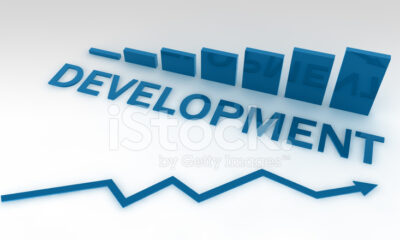
 News & Analysis3 years ago
News & Analysis3 years ago
 News & Analysis3 years ago
News & Analysis3 years ago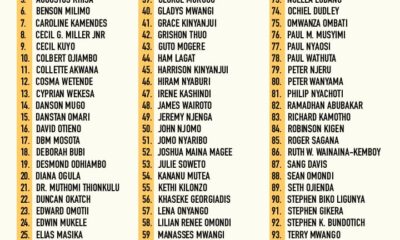
 Lawyers1 year ago
Lawyers1 year ago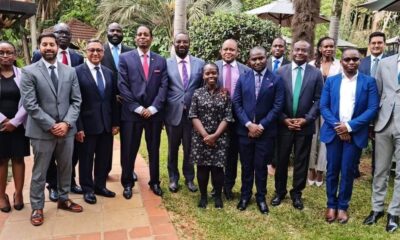
 News & Analysis2 years ago
News & Analysis2 years ago
 News & Analysis1 year ago
News & Analysis1 year ago
 News & Analysis3 years ago
News & Analysis3 years ago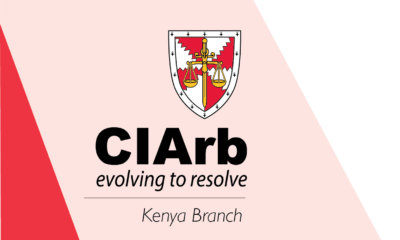
 News & Analysis1 year ago
News & Analysis1 year ago













